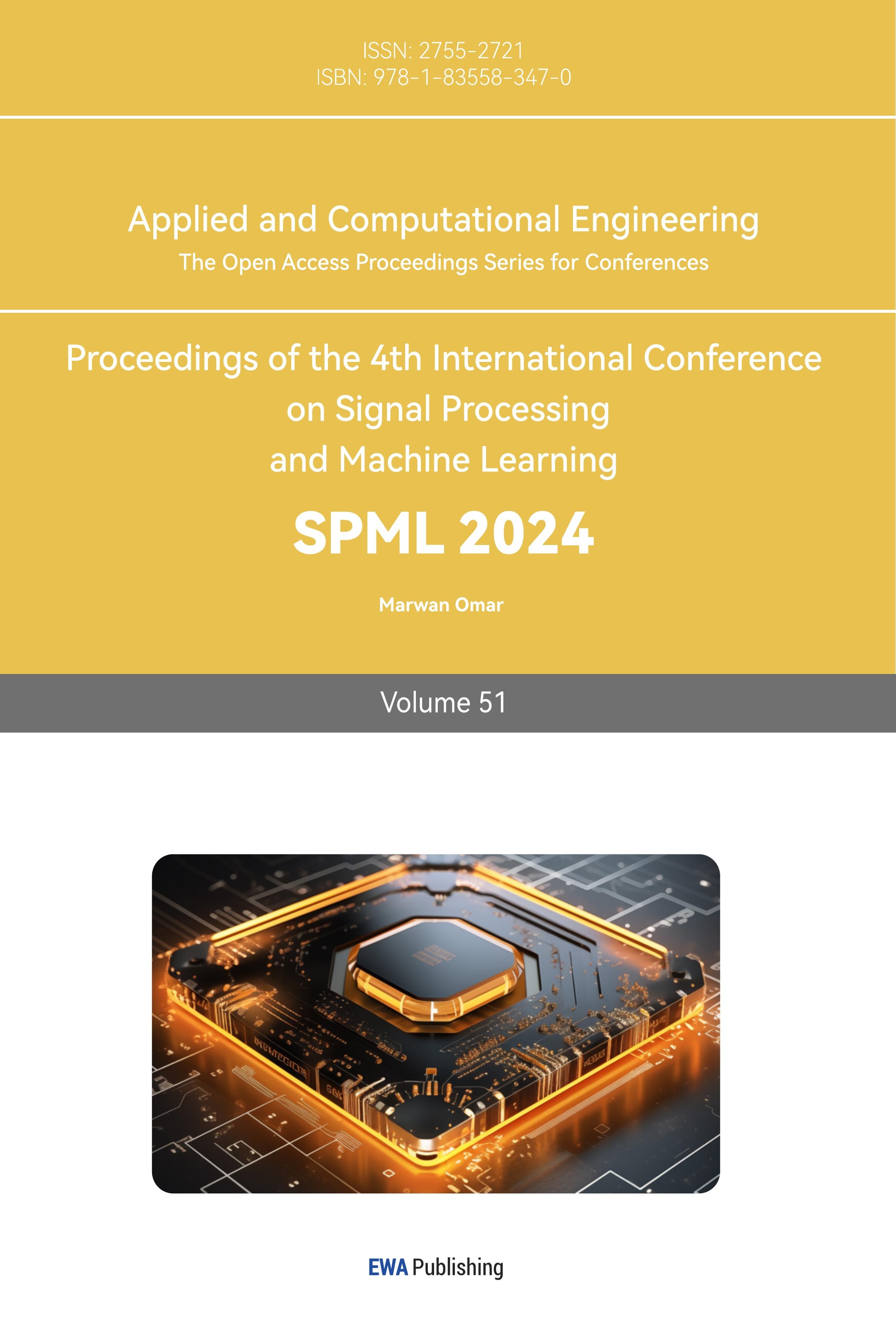1. Introduction
Stroke is the most severe problem in the world. A stroke is a sudden vessel block that occurs when blood flows to a part of the brain is disrupted. The blood contains red blood cells that carry oxygen and nutrients, the more vessels get blocked, the lack of brain supply will happen, leading to a sudden death eventually by brain damage. Stroke is one of the leading causes of disability and death globally, and it is frequently referred to as "brain disease flare-ups." Every year, about 800,000 new strokes occur in the United States; roughly 137,000 people pass away as a result, and survivors permanently alter their way of life. [1] There are now an estimated 6.5 million stroke survivors in the United States. Many patients experience "small stroke" symptoms in the days or weeks before having a stroke, but these symptoms are frequently overlooked. If untreated, stroke risk might increase to 30% to 50% after three months. Therefore, the ability of stroke prevention to preserve research on stroke prediction is essential to stroke prevention. “Globally, stroke became the second most leading cause of death [1].” In 2019, there are 11.9% of all deaths caused by stroke.[1] 77.19 million people experienced ischemic stroke, which is the most common one of all types of strokes, ischemic stroke, 62.4% of the strokes relates to this. In order to raise people's awareness of the causes of stroke and lower their risk of developing stroke, this study attempts to forecast the patient's chance of having a stroke utilizing current databases and Python programs. As a major collection, the death rate could be 12.5%. That is a super high death rate, and stroke is the only possible disease that could cause a sudden death.
In the following paragraphs. The paper will express different typical types of strokes, along with their features, causes, and symptoms. The first will be the ischemic stroke. Ischemic strokes total 87% of all strokes. The second is a hemorrhagic stroke. Hemorrhagic stroke makes up the remaining 13%. There are small branches of different mini strokes, like, Transient Ischemic Attack, Brain stem stroke, and Cryptogenic stroke, which means the stroke is caused by unknown causes.
2. Pathology and cause analysis of apoplexy
Ischemic stroke is the most frequent stroke in the world. Globally, stroke is the second leading cause of death, with 11.6% of deaths caused by stroke [1]. The portion and percentage for ischemic stroke rose from 62.4% to 87%. There are two main types of ischemic stroke. One is “Thrombotic stroke”, and another is “Embolic stroke”. Thrombotic strokes will cause blood clots in one of the arteries that supply blood to the brain. It will lead to some neurological symptoms [2]. For instance: “A thrombotic stroke will cause weakness and numbness of the face, arm, or legs [2]. People will have confusion and vision problems. The bigger the clot is, the higher the death rate it raises. People who have high blood pressure, high cholesterol levels, diabetes, obesity, age, and smoking problems. This is more likely to be a standard stroke problem that could lead to death. The second, which is an embolic stroke, is another type of ischemic stroke. Unlike the first one like a clot. An embolic stroke is an embolus. It could travel from heart to brain. Since its size, the embolic stroke could only block some small vessels. This embolus usually happens with the heart. [3]People who have a heart flaw, or a heart attack will have a higher chance of getting an embolus [2]. A stroke will cause complications and will destroy brain cells. So, the cause of death of people who get strokes may not only be strokes. But these compilations are on a more long-term basis. Well-treated could be overcome. Mis-treated will cause the accumulation of fluid in the brain, swelling and hemorrhage; Convulsions; Memory loss; and Difficulties in understanding people’s speech [3]. Ischemic stroke is also a long-term basis. Fatty substances will accumulate in the arteries. Oily food will cause more strokes, especially high glucose levels based on the research that will be provided later. [3] On Global prediction, the people 25 years old risk of all strokes is 25.4%, and ischemic stroke is 18.3%.
3. Result
This research provided the association of age, to see how age factors will affect the rate of stroke. The bottom graph Figure 1 shows the people who will get stroke lines. 0-19,20-39,40-59, and the number of people greater or equal to 60 years old [4]. In the past twenty years. Every group of people increases rapidly for the percentage of deaths that stroke causes. For the gender part. Women will have a higher risk of getting a stroke than a man. That is because when people get over 60 years old [4]. The risk of getting a stroke will increase two times every ten years. Since the women’s lifetime will be averagely higher than men's. [4]So, their chance of getting a stroke is higher than that of men. Next, the research also collects the data from the number of stroke cases, death rate, and disability-adjusted in different eras. That will help the people to predict its growth to have corresponding strategies to face it. It can be seen that the number of people getting strokes has increased from 2010 to 2020.[4] The reason for that is because the average human life length is extending. [4]Medical ability has kept advancing through the decades, that’s why it was decreasing initially. Correspondingly, the death rate is decreasing as well, and also the disability-adjusted people.
3.1. Stroke overview

Figure1. Person percentage will get a stroke in 1990-2030(2020 go 2030 are prediction by linear regression), A: Age 0-19, B: Age 20-39, C: Age 40-59.
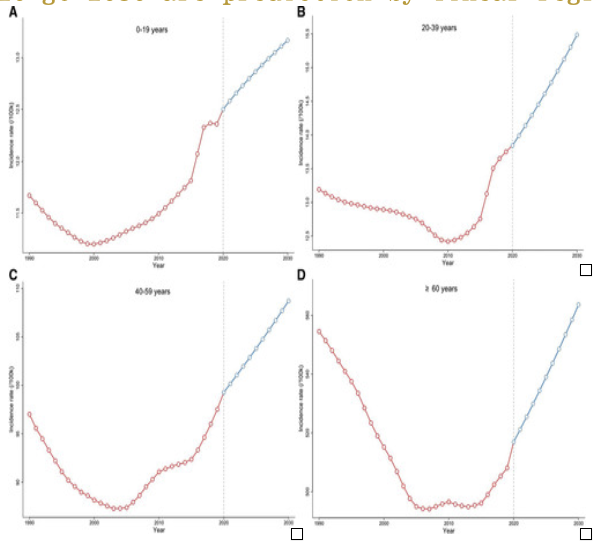
Figure 2. Person's number of stroke cases, death rate, and disability-adjusted in 1990-2030(2020 to 2030 are predicted by linear regression), A: Age 0-19, B: Age 20-39, C: Age 40-59, D: Age >=60.
In this paragraph, the research will describe the second major stroke-Hemorrhagic stroke. This stroke content is 13% compared with the ischemic stroke which has nearly 87% [5]. Hemorrhagic stroke is often caused by sudden bleeding [5]. Sudden bleeding may be caused by hypertension, head injuries, Cerebral aneurysms, high blood pressure, blood vessel leaks or ruptures, liver diseases, brain tumors, and drug abuse [6]. Hemorrhagic stroke could be a conversion by ischemic stroke, or it could be a stroke that is caused by a brain tumor or bleeding disorder [6]. Although there are only 13% of adults get hemorrhagic stroke instead of ischemic stroke. The high percentage of happening in the group of children is devastating [6]. Nearly 44% of the strokes that a child could have been by hemorrhagic stroke. It is because people will have a blood vessel problem by birth, or sickle cell disease. Hemorrhagic stroke is a super severe problem for kids. In the research for 2020, there are only 34% of the people who survived after the 1st year that they experienced. But the most important thing is to treat it well [6]. After medicine and surgery interfere, the people could get back to their original life from 12%-36%. The symptoms of hemorrhagic stroke are Sudden numbness or weakness of the face, arm, or leg, especially on one side of the body Sudden confusion Sudden trouble speaking, Sudden trouble seeing in one or both eyes Sudden trouble walking Sudden dizziness, loss of balance, or coordination Sudden, severe headache with no known causes [7]. The most risky factor of hemorrhagic strokes is high blood pressure. Over time, high blood pressure can weaken blood vessel walls, increasing the risk of rupture. Blood pressure regulation is essential for preventing hemorrhagic strokes. Another main factor for hemorrhagic strokes is aneurysm, which means weakened blood vessels. That will make the blood rush out of the vessel. It is the difference with ischemic stroke. Smoking could be a main factor that weakens the blood vessels. [7]Similar to ischemic stroke, hemorrhagic stroke will also have a higher risk in older people. Especially the people who are over 65 years old. For the same result above in the research of ischemic stroke, the possibility of getting an ischemic stroke will be doubled every ten years after the 60s. Figure 3 shows the number of people who get an ischemic stroke and hemorrhagic stroke by age. The climax will be 60 and 70 Since there are not that many people in their 80s. Hemorrhagic stroke is the second major stroke of all strokes.
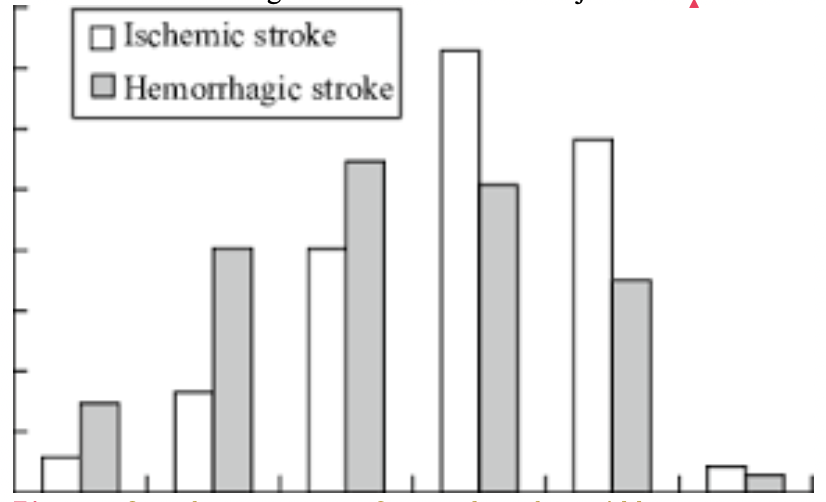
Figure 3. Amount of people who will get a stroke 20-80-year-old people who will get an ischemic stroke or hemorrhagic stroke.
This paragraph will illustrate the rest of the stroke which is lower than 1%. This will contain the Transient Ischemic Attack, brain stem stroke, and Cryptogenic stroke [8]. A transient ischemic attack. It is a short stroke that will cause a short numbness, confusion, or dizziness in a couple of minutes or a day. As its name, the cause will be more like an ischemic stroke [8]. The cause is blocked vessels. But it’s not totally blocked, a clot that narrows the brain vessel. Same as the ischemic stroke. The people who may have a higher risk are elders, heart disease, diabetes, and smoking. The main difference between a mini-stroke and a normal ischemic stroke is its duration. A stroke has always been clarified as a long-term disease, and it has always been related to more neurological symptoms. A brain stem stroke is a major stroke that happens on the brain stem. It is a severe problem since the brain controls most parts of the body. People will have a hard time to be able to speak or move any parts of the neck. People will have difficulty speaking and swallowing. Or it might oppress the vision nerve. It may cause double vision, or other visual disturbances [8]. As a normal stroke. The risk factors will also be smoking, high blood pressure, diabetes, high cholesterol, and high age [9]. The cause of a brain stem stroke could be the presence of blood clots; hemorrhages; and damage to the artery due to sharp turns of the head or neck. The Last stroke for the minority of the stroke is Cryptogenic stroke or an unknown cause stroke.
By knowing the many types of strokes. The most important paragraph of the research paper is to collect all types of stroke’s common traits and provide the best prevention strategies. This is the whole purpose of this research paper. The research group had gathered the most common factors that could lead to a stroke. In the world, stroke, often known as "brain disease flare-ups," is one of the main causes of disability and death. [9]Every year, about 800,000 new strokes occur in the United States; roughly 137,000 people pass away as a result, and survivors permanently alter their way of life. There are now an estimated 6.5 million stroke survivors in the United States. Many patients experience "small stroke" symptoms in the days or weeks before having a stroke, but these symptoms are frequently overlooked. If untreated, stroke risk might increase to 30% to 50% after three months. Therefore, the ability of stroke prevention to preserve research on stroke prediction is essential to stroke prevention. The systematic procedure for carrying out the research project is shown in the flow chart (Fig. 1). The research group start by identifying the precise issue we want to look into. After selecting a topic, Research and literature comprises obtaining available data and looking at pertinent literature to develop an understanding and context for the study. Next, we compile the information needed for the analysis. The majority of these facts come from the internet. The term "model" refers to the development of an appropriate model or framework for the efficient analysis of the gathered data. Writing the code requires converting the selected model into text that can be used to handle and manipulate data. The final step, Analyze Conclusion, is running the code on the gathered data and analyzing the outcomes to get important insights from the research study. The flow chart makes sure that the research process is ordered and logical, which helps to ensure that investigations are thorough and well-managed. [10]Leo Breiman and Adele Cutler are the creators of the widely used machine learning technique known as random forest, which mixes the output of various decision trees to produce a single outcome.[10] Its widespread use is motivated by its adaptability and usability because it can solve classification and regression issues. The first chart shows the distribution of stroke patients, for every 50 people, one person is a patient under stroke's sufferance. But the more devastating result shows, there are 1 in every 4 in the US will have a stroke in our lifetime [10]. Stroke will cause heart attacks that kill people. So, even if you are not a stroke patient, the number of people dying by stroke is still substantial. Knowing and acknowledging more knowledge of prevention and the common symptoms of stroke could save millions of lives, this is the whole purpose of our project.
3.2. Factors of Stroke’s cause
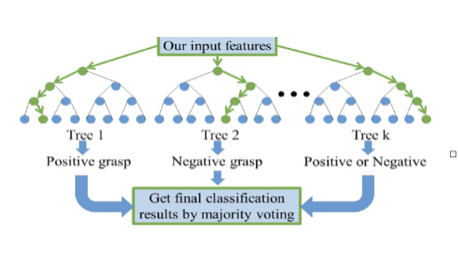
Figure 4. Treemaps for different selections and find the classification of different routes [10]
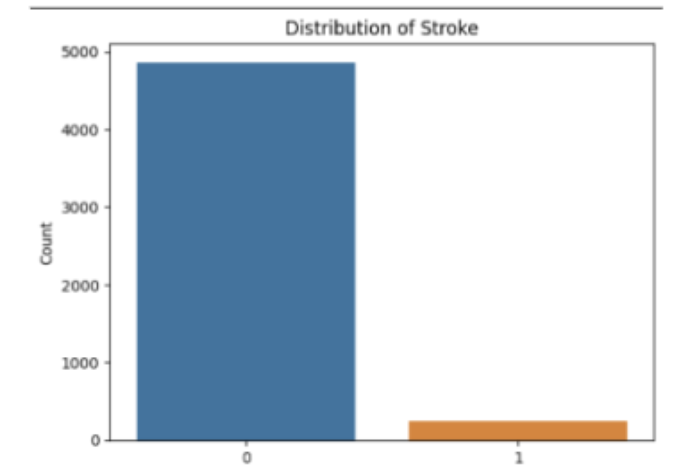
Figure 5. The number of distrubution of the people didn’t get a stroke and the people who get a stroke.
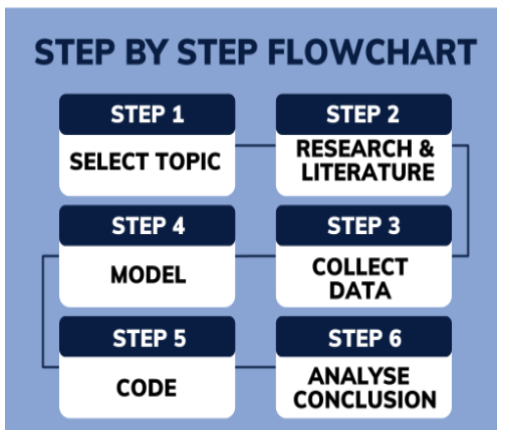
Figure 6. The steps for doing research.
On another hand, the bar chart (figure 6) shows a stroke will more commonly happen to people that exceed 60 years old. This is a common international standard for people who an elderly. This means, the older you are, the more likely you are to have a stroke. The chance of you having a stroke doubles every 10 years after 60 years old. A longer lifetime will cause more strokes.

Figure 7. The people who didn’t get a stroke and the people who get a stroke versus different age levels.
The third histogram (figure 7) expresses the relationships of a stroke that happen depending on gender. We could see women or females have a higher count on both stroke and non-stroke people. This is because women used to have a longer age. That will make them have a longer time and the probability of having a stroke having high blood pressure when they are getting pregnant could also be a typical problem.
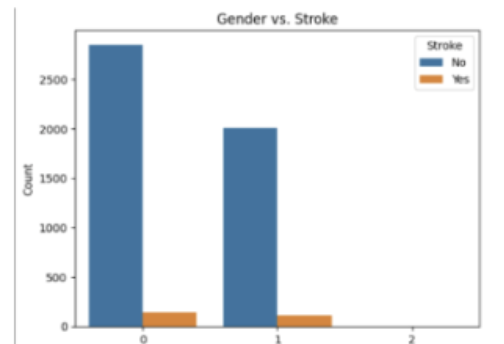
Figure 8. The first two histogram shows how many women get a stroke, and how many don’t; the second two show the men’s
The fourth box plot (figure 8) represents the patient's glucose level when they are having a stroke. As it represents, a higher glucose level will cause a higher possibility of getting a stroke. We could see there is a 3 times probability you will get a stroke when your glucose level in your body is higher than 75. Excessive blood glucose can cause increased fatty deposits in blood vessels. These clots can be stuck or block the blood vessels in the brain or neck, limiting the blood supply, stopping oxygen from getting to the brain, and causing a stroke.
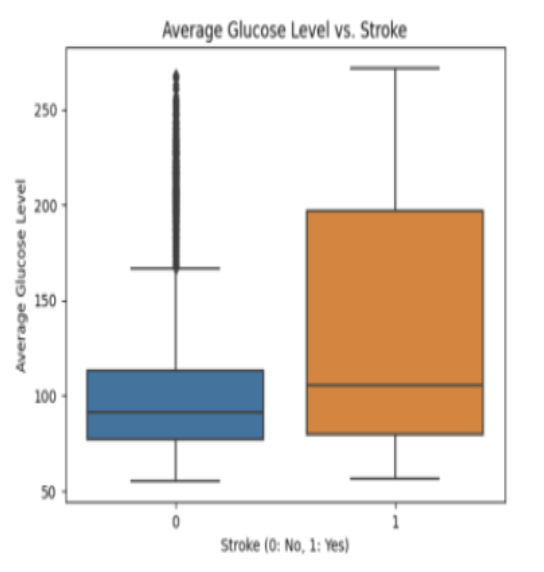
Figure 9. Box plot for the people who get a stroke and not get a stroke versus glucose level.
The fifth box plot (figure 9) is similar to the previous chart. BMI index is derived from the proportion of height and mass. A higher BMI means that people are more chubby, which could depend on that person having a higher glucose level. Still, this is an extension for the fourth result.
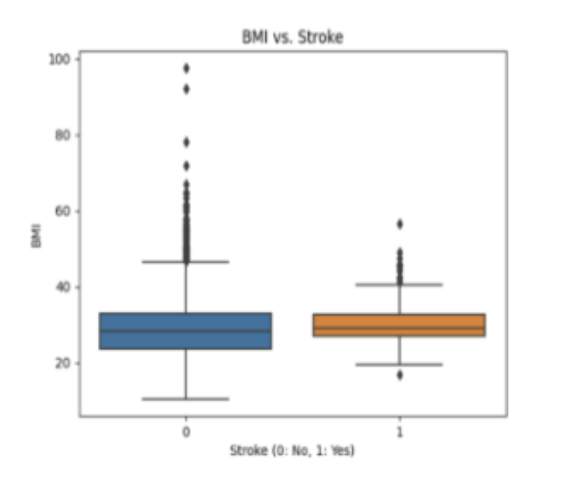
Figure 10. Box plot for the people who get a stroke and do not get a stroke versus their BMI.
The last chart (figure 10) is a collection of many different experiments for calculating the probability of a stroke. Due to the graph, we can see it is obviously skewed to the right, which means the mean is higher than the median. The value is more likely to be less than 0.1 by three standard deviations, which means there is over 99.5% chance that the opportunity to have a 10 percent chance of getting a stroke in life. That is a super high probability. It will let us attend and be aware of the risk of it, and it is the only possible case that could cause a rapid death. That is the goal of the research paper.
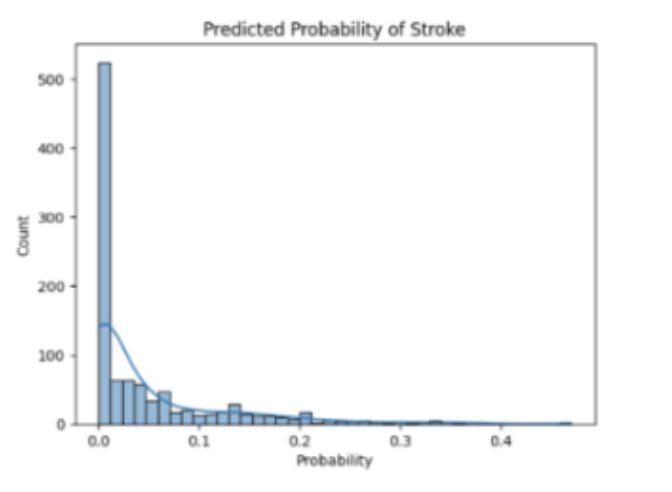
Figure 11. Total probability for a person that gets a stroke.
For the final prevention strategies and suggestions to the patient, strokes have some common factors. These are the main points that the reader should take away. stroke shows us they are killing us by blocking the blood vessels in most cases, which means more fat may cause more possibility of getting a block in our vessels. That will also reflect people’s glucose level, and BMI index, which is the proportion of weight and height. For the gender and age aspects. People who get older age will have a higher chance of getting a stroke, especially when they get over 60 years old, every ten years older, the chance will rise up twice as it was before. The prevention strategy is to get more frequent examinations in the hospital. Respectively, women usually have a higher life length than men. That makes women have a “higher” stroke rate. But the truth is gender doesn't have a big impact on the rate of stroke from the graph shown previously. But when we talk about all the death rates of people after the 70s [7]. The men have a significantly higher death rate than women, the main factor is more men are smoking. Another risk factor for ischemic stroke might be some basic genetic reason. People that have a family history of stroke, or a heart attack basis may have a higher risk of getting an ischemic stroke. So, these people need to be aware. For more research, African Americans have twice as much as white people to get a stroke. Hispanic Americans are also at a higher risk than white people to get one, but lower than African Americans. People could also control their high blood pressure to make sure their vessels are healthy; this needs a good diet and a healthy BMI as well. Maintaining a good body weight could well address the blood pressure and heart attack risk. This requires people to exercise regularly [8]. Quit smoking, limiting alcohol consumption is crucial as well. The most important strategy is listening to the doctors when you find out about a stroke and treat it seriously.
4. Conclusion
Prevention strategies with respect to people who get a stroke is an essential topic around biochemical research. Data visualization is a new way to help us to get deeper into this “sudden death cause.” The topic is crucial since you can’t get any good treatment when you notice that you have a stroke because you will be unconscious suddenly. The research and prevention strategies are listed based on all types of stroke’s common factors. It may not only work for one part of the disease but the whole realm. The doctors will use these data to apply the solution for all strokes. Internal medicine, the brain, cardiology, and the digestive system will all have to consider these. This research may give some reference to the people who develop the solution or medicine to avoid stroke. Time is the most important factor for the medical realm. I hope that will make patients be more careful about their health to do their body examination then avoid sudden stroke.
References
[1]. Pu, L., Wang, L., Zhang, R., Zhao, T., Jiang, Y., and Han, L. 2023 Stroke 54 5 1330-1339
[2]. Loeb. 5 Types of Strokes 2022 Long Star Neurology
[3]. CDC, A. W. 2020 Centers for disease control and prevention.
[4]. Hachinski, V., Iadecola, C., Petersen, R. C., Breteler, M. M., Nyenhuis, D. L., Black, S. E., and Leblanc, G. G. 2006 Stroke 37 9 2220-2241
[5]. Cedars S. 2023 Ischemic stroke Cedars Sinai non-profit organization
[6]. Valencia H. 2023 Hemorrhagic stroke: What to look for and how to prevent it Medical news today
[7]. Office of Communications 2022 How many people are affected by/at risk for stroke US Department of Health and Human Services
[8]. Center of Disease Control Center 2023 About Stroke
[9]. Mayo C. 2023 Stroke
[10]. Go, A. S., Al-Khatib, S. M., Desvigne-Nickens, P., Bansal, N., Bushnell, C. D., Fang, M. C., and Benjamin, E. J. 2023 Stroke 54 3 e75-e85
Cite this article
Meng,F. (2024). Explore the causes and prevention strategies of stroke. Applied and Computational Engineering,51,216-224.
Data availability
The datasets used and/or analyzed during the current study will be available from the authors upon reasonable request.
Disclaimer/Publisher's Note
The statements, opinions and data contained in all publications are solely those of the individual author(s) and contributor(s) and not of EWA Publishing and/or the editor(s). EWA Publishing and/or the editor(s) disclaim responsibility for any injury to people or property resulting from any ideas, methods, instructions or products referred to in the content.
About volume
Volume title: Proceedings of the 4th International Conference on Signal Processing and Machine Learning
© 2024 by the author(s). Licensee EWA Publishing, Oxford, UK. This article is an open access article distributed under the terms and
conditions of the Creative Commons Attribution (CC BY) license. Authors who
publish this series agree to the following terms:
1. Authors retain copyright and grant the series right of first publication with the work simultaneously licensed under a Creative Commons
Attribution License that allows others to share the work with an acknowledgment of the work's authorship and initial publication in this
series.
2. Authors are able to enter into separate, additional contractual arrangements for the non-exclusive distribution of the series's published
version of the work (e.g., post it to an institutional repository or publish it in a book), with an acknowledgment of its initial
publication in this series.
3. Authors are permitted and encouraged to post their work online (e.g., in institutional repositories or on their website) prior to and
during the submission process, as it can lead to productive exchanges, as well as earlier and greater citation of published work (See
Open access policy for details).
References
[1]. Pu, L., Wang, L., Zhang, R., Zhao, T., Jiang, Y., and Han, L. 2023 Stroke 54 5 1330-1339
[2]. Loeb. 5 Types of Strokes 2022 Long Star Neurology
[3]. CDC, A. W. 2020 Centers for disease control and prevention.
[4]. Hachinski, V., Iadecola, C., Petersen, R. C., Breteler, M. M., Nyenhuis, D. L., Black, S. E., and Leblanc, G. G. 2006 Stroke 37 9 2220-2241
[5]. Cedars S. 2023 Ischemic stroke Cedars Sinai non-profit organization
[6]. Valencia H. 2023 Hemorrhagic stroke: What to look for and how to prevent it Medical news today
[7]. Office of Communications 2022 How many people are affected by/at risk for stroke US Department of Health and Human Services
[8]. Center of Disease Control Center 2023 About Stroke
[9]. Mayo C. 2023 Stroke
[10]. Go, A. S., Al-Khatib, S. M., Desvigne-Nickens, P., Bansal, N., Bushnell, C. D., Fang, M. C., and Benjamin, E. J. 2023 Stroke 54 3 e75-e85





